Hyundai Sonata Hybrid Review: The Solar Roof Is Really Good For One Thing
- 47mpg fuel economy from a hybrid powertrain
- Solar roof on Limited trim is a neat addition
- Plenty of standard safety equipment
- Cabin is spacious and the tech is easy to use
- Driving dynamics err on the stiff & sensible side
- Design isn't going to please everyone
Hyundai offers a solar roof on the Sonata Hybrid sedan, though the promise of free driving courtesy of the sun isn't really where the technology shines. The frugal family car eschews plug-in hybrid technology in favor of the altogether simpler pairing of a decent-sized gas engine and an electric motor that play together, though the solar cells embedded in the glass roof do step away from the norm.
You'll need the most expensive version of the hybrid to get the solar boost – the Limited trim, from $35,300 (plus $975 destination) – since the cheaper Blue ($27,750) and SEL ($29,900) versions don't offer it. The Limited also gets full LED headlights to match the taillights, along with 17-inch wheels.
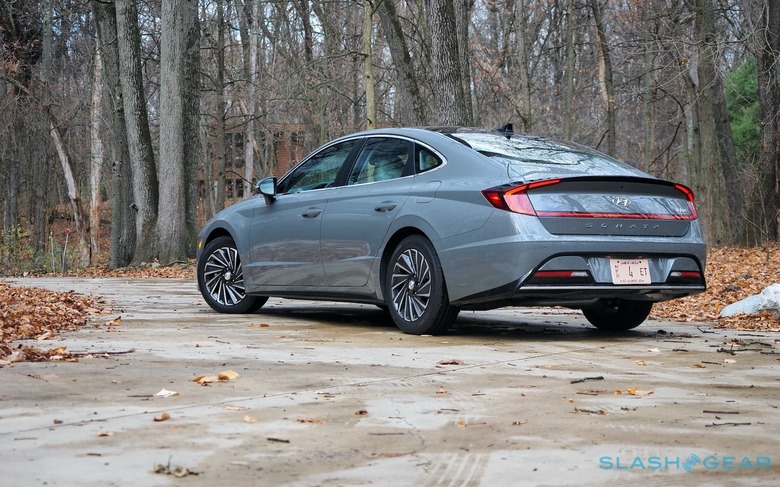
I'm not the biggest fan of the Sonata's styling. The broad front grille, mounted low down under the drooping hood, says "fairly miserable guppy" to me, though the stylized headlamps with their flourish of chrome turn heads. A lot of people really seem to like it all, though, which just goes to show how subjective design can be.
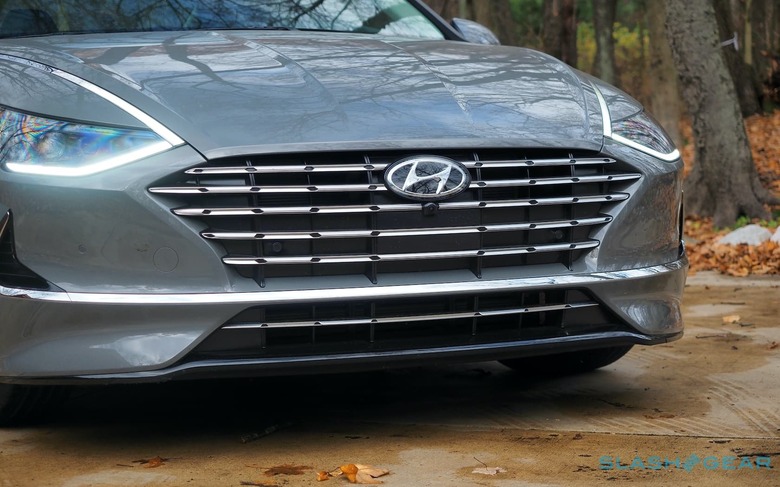
The Sonata Hybrid adds fancy efficiency wheels, which manage to look more sporty than pious, while inside the Limited trim adds a fair amount of gadgetry. The 10.25-inch touchscreen infotainment system – supporting Apple CarPlay and Android Auto – is joined by a fully-digital 12.3-inch driver's display, and there's 12-speaker Bose audio, wireless phone charging, heated and ventilated front seats, a heated steering wheel, color head-up display, and a 360-degree camera.
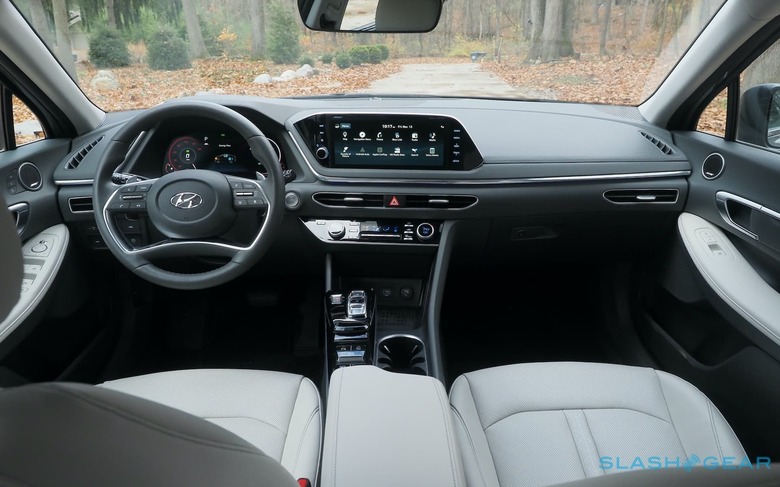
Hyundai's infotainment UI isn't as slick as that of luxe stablemate Genesis, but it's still easy to use. The same could be said for the Sonata Hybrid's switchgear, which feels solid even if the plastics aren't especially fancy. At least the leather on the seats feels decent, and the chairs themselves are comfortable and supportive.
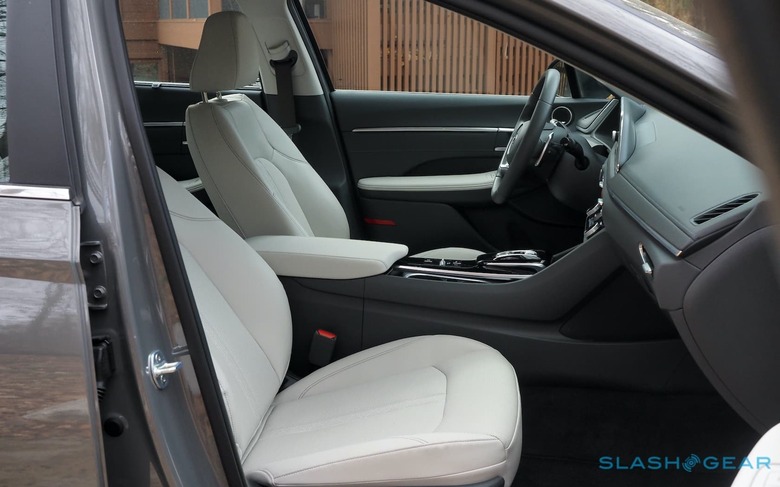
Hyundai gives you adaptive cruise control, lane keeping and following assistance, automatic emergency braking with pedestrian detection, rear parking collision avoidance assistance, and blind spot collision avoidance assistance. There are front and rear parking sensors, and Hyundai's Highway Driving Assist for hands-on cruise and lane-keeping.
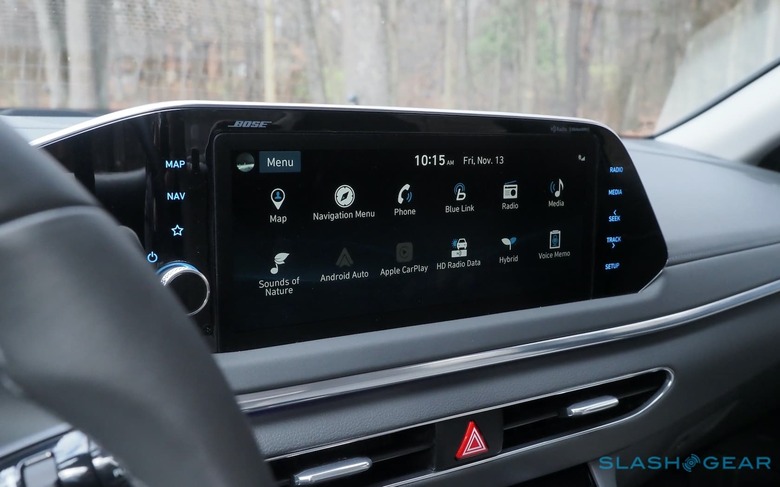
The most exciting thing, though, is arguably the solar roof, which comes standard on the Sonata Hybrid Limited trim. Now, Hyundai isn't the first automaker to put a solar roof on a production car: Toyota did it all the way back in 2012 in fact, on the Prius, though panel technology then meant it wasn't all that efficient. As a result, the hybrid used it to help offset secondary power requirements, like the HVAC, rather than actually adding to vehicle range.
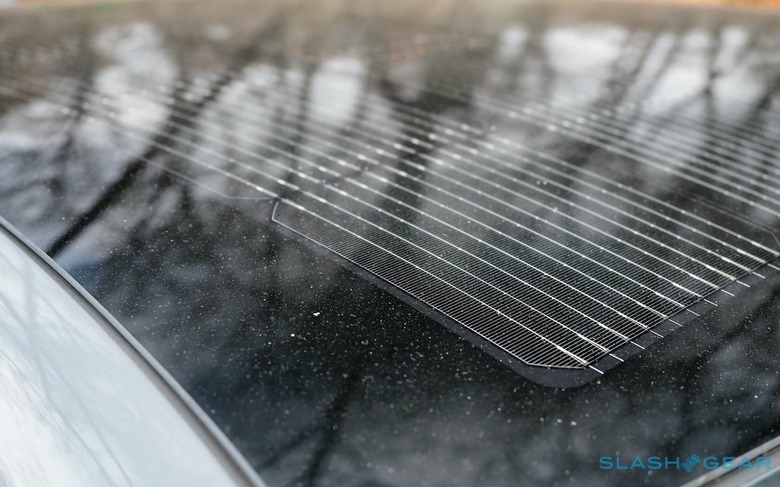
Since then we've seen a few more attempts, and indeed hyper-efficient cars which promise far more dramatic gains from solar. The Sonata Hybrid's system, meanwhile, links the solar panels embedded in the glass roof via a converter to both the high-voltage 1.6 kWh battery used to power the Hyundai's electric motor, and to the 12V battery for its electronics.
The reality of the solar roof is that it's not going to liberate you from the gas pump any time soon. Hyundai says that the panels it chose have a 22.8-percent efficiency rate, which makes them significantly more effective at converting sunlight to electricity than the panels you'd typically find living on a house roof. However you're still talking about a relatively small area.
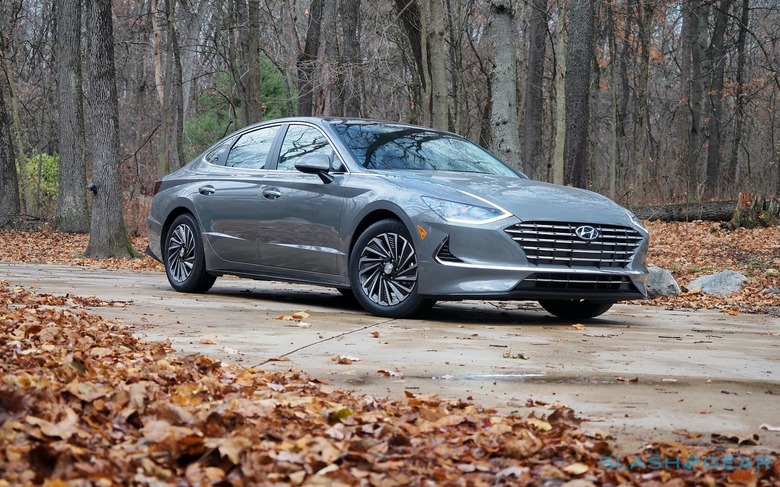
You're looking at 204 watts in the best conditions. That's tough to quantify in terms of driving, but Hyundai says that if you charged in the best case scenario with lavish sunshine for 5.8 hours a day, it would add sufficient power for about 808 miles driving per year. In short, there are a lot of moving parts to consider, but an hour's sunshine will drive you, at best, about 2,000 feet.
Clearly, nobody is going to be doing all of their Sonata Hybrid driving on solar power alone. Hyundai certainly wouldn't expect that (and nor is that what's being promised, to be fair). The Sonata Hybrid is EPA rated for 47 mpg combined, 45 mpg in the city, and 51 mpg on the highway. They're solid figures, but the Honda Accord Hybrid still bests it with a point on the combined cycle.
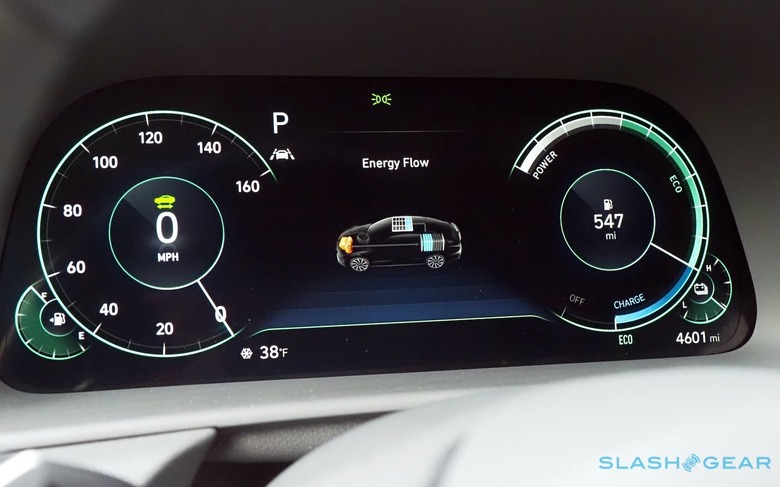
The real advantage of the solar roof is how it makes you think about power. I've always liked the graphics most electric vehicles and hybrids use to show just where the juice is flowing: either from the batteries (or, if fitted, the gas engine) to the motors for propulsion, or in the opposite direction when you're using regenerative braking. I find I drive more conscientiously when I'm in an EV because of that: there's something about being able to see just how effectively you're making use of the power on tap which brings out my competitive side.
I think it comes down to awareness. It's easy to get into a car and just drive, without thinking about efficiency or how you're using power until the light comes on to remind you to fill the tank (or plug it in). Being presented with a visual reminder of just how much energy you're actually using in real time, though, and where that energy is coming from, is a nudge that regular miles-per-gallon numbers don't quite manage.
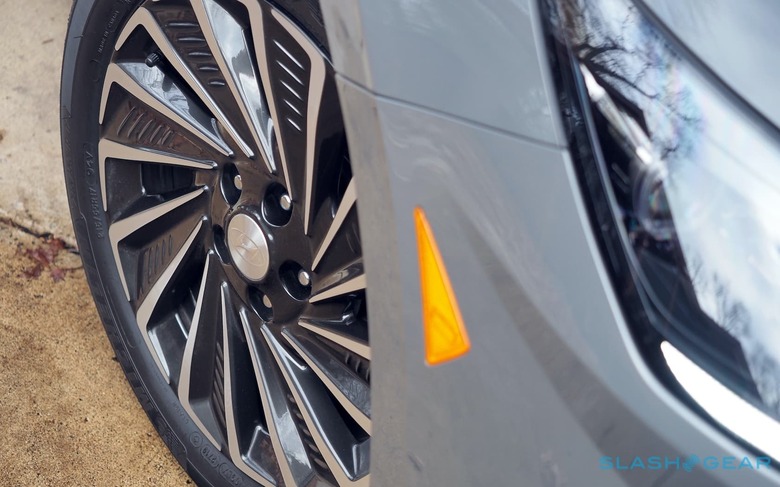
It's not to say I drive frugally every time. With 192 horsepower from the 2.0-liter inline-4 gas engine and the electric motor combined, the Sonata Hybrid isn't going to be anybody's choice for a race. Nonetheless, pickup from a standing start is swift courtesy of the instant electric torque – 151 lb-ft from the electric motor alone – and Hyundai even uses some of that motor's punch to cleverly speed up gear-changes from the six-speed automatic. It seems to work, though sometimes the changes can still be a little lumpy, and the transition between gas and electric isn't as smooth as in some rival hybrids.
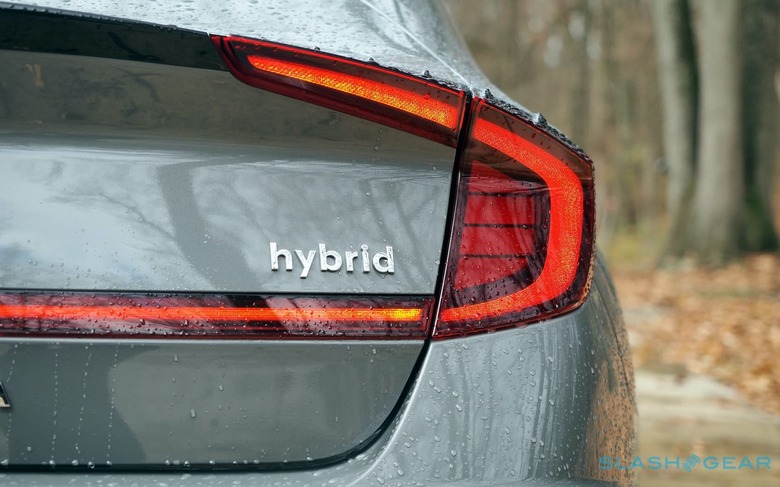
The result is a car that feels planted and adequate for the everyday, even if it's not excessive. The suspension is tuned on the firm side, which helps avoid undue body roll in the corners but can leave it feeling jittery. Sport mode seems to amplify those tendencies more than increase pace. I'd not argue with more regenerative braking when you lift off, either, though the Sonata Hybrid definitely slows more than most ICE cars when you ease off the gas. Eager brakes not only slow the Hyundai effectively, but start sending power back into the batteries.
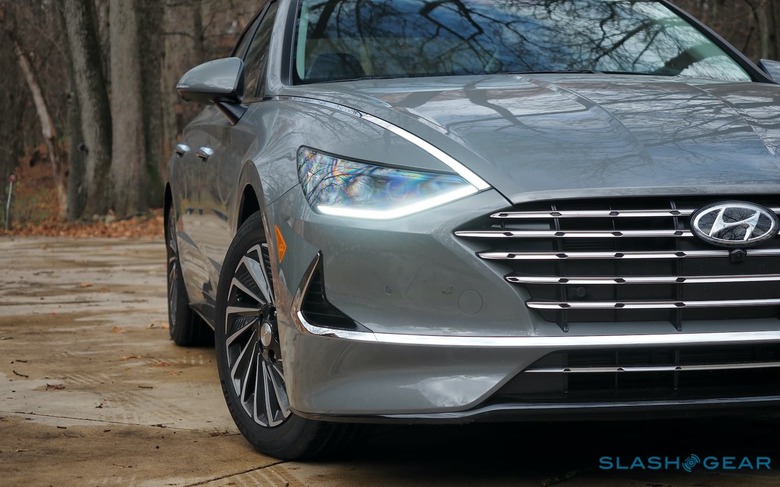
I didn't match the EPA's numbers, but I was definitely more conscious about how I was driving. It's a reminder that, for all the eco tech that automakers cook up to coax out more efficiency, it really does come down to the person behind the wheel to make the biggest difference. In that sense, Hyundai's solar roof may be a minor contributor to the Sonata Hybrid's overall economy, but it plays an outsized role in pushing a green message. Free power is free power, after all, and you might just find you're motivated to really make the most of it.
